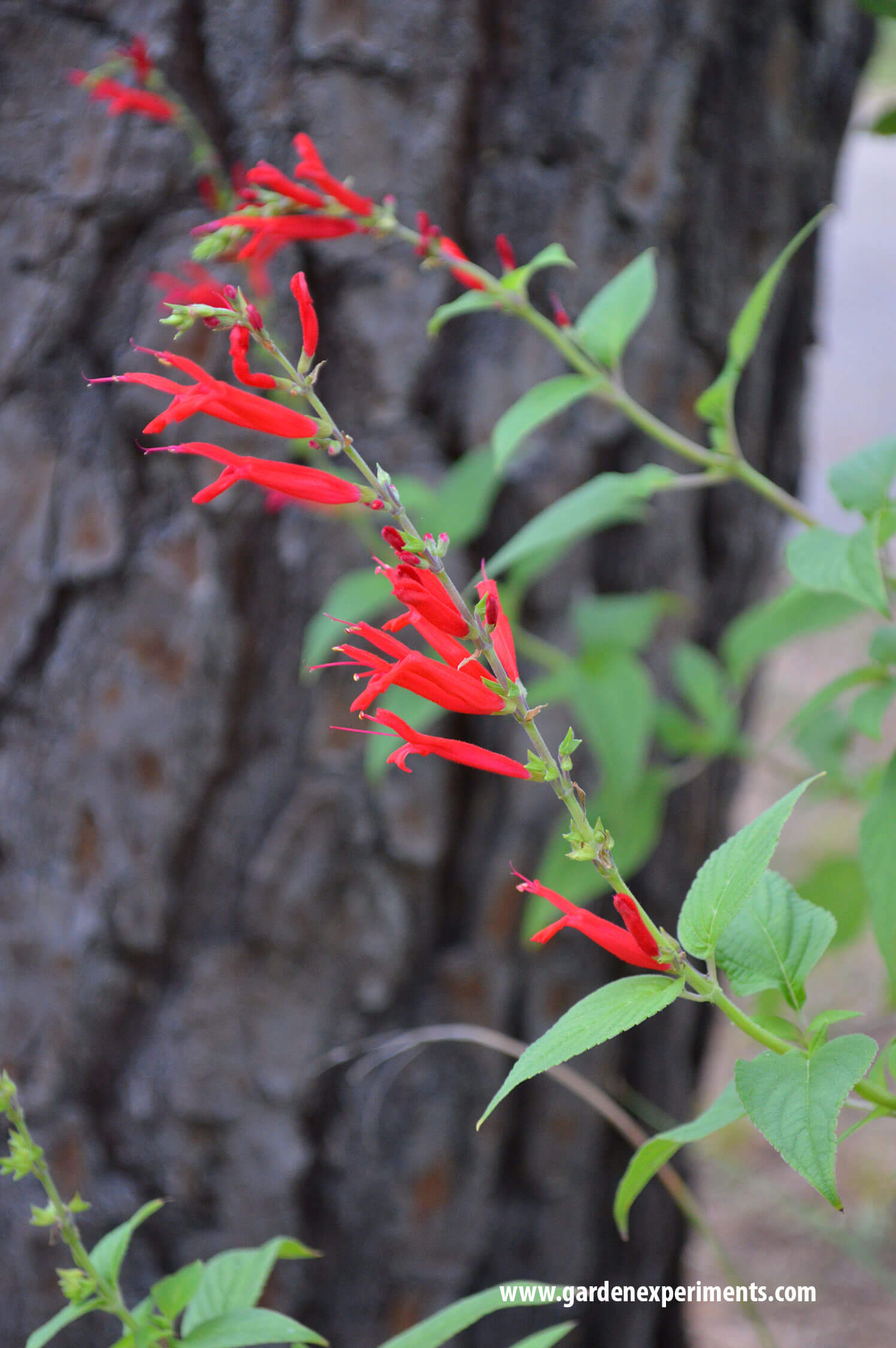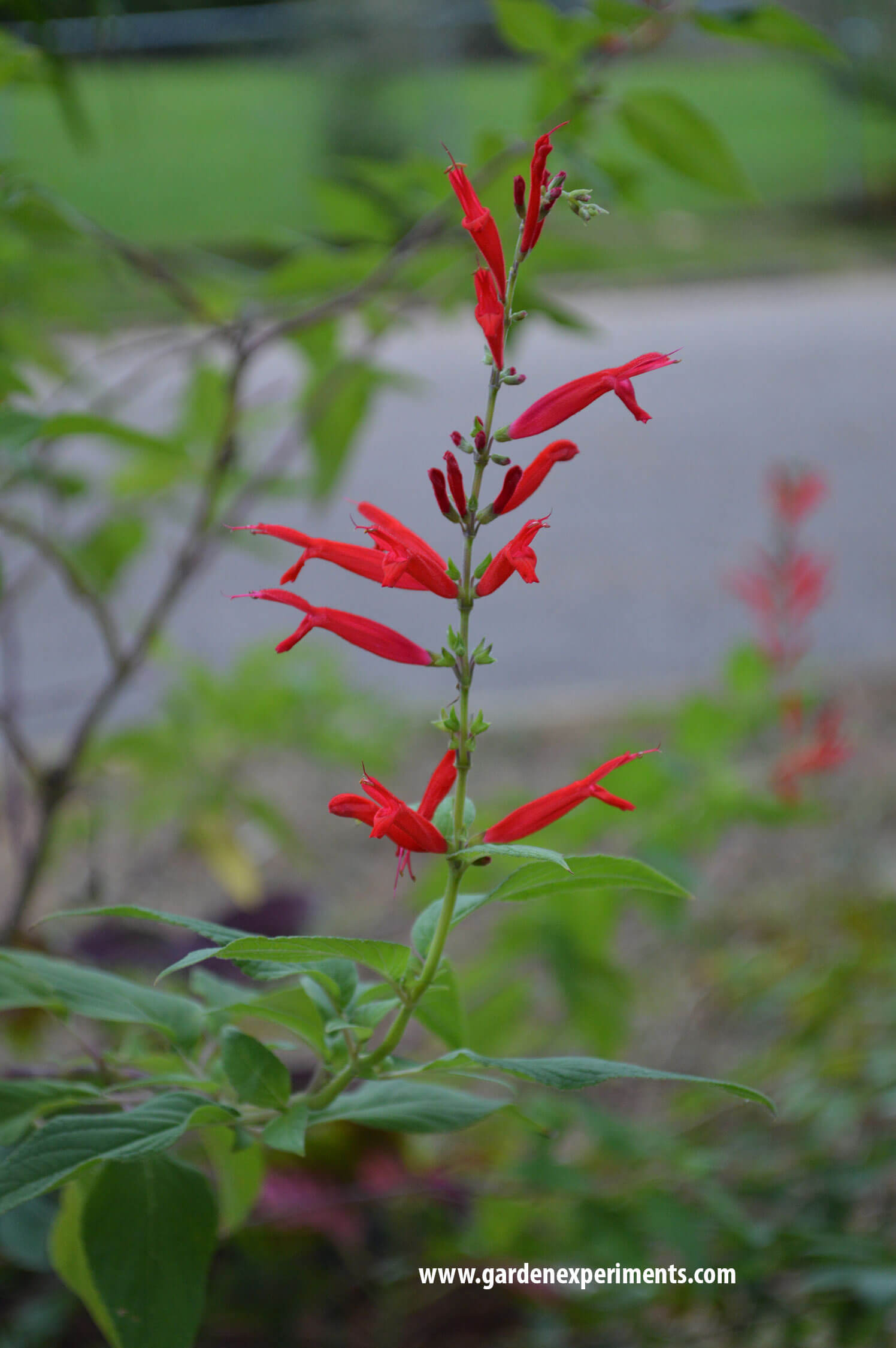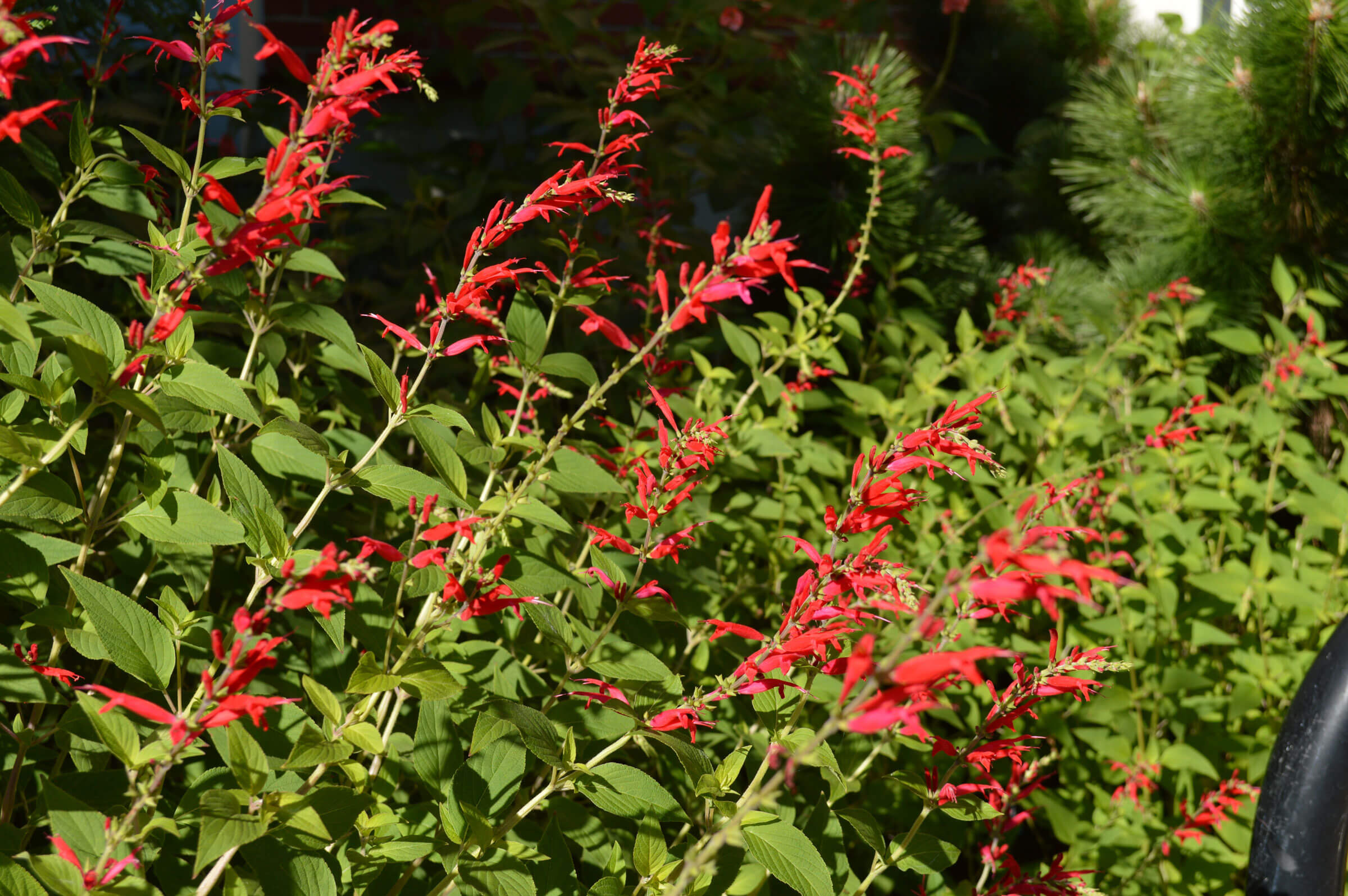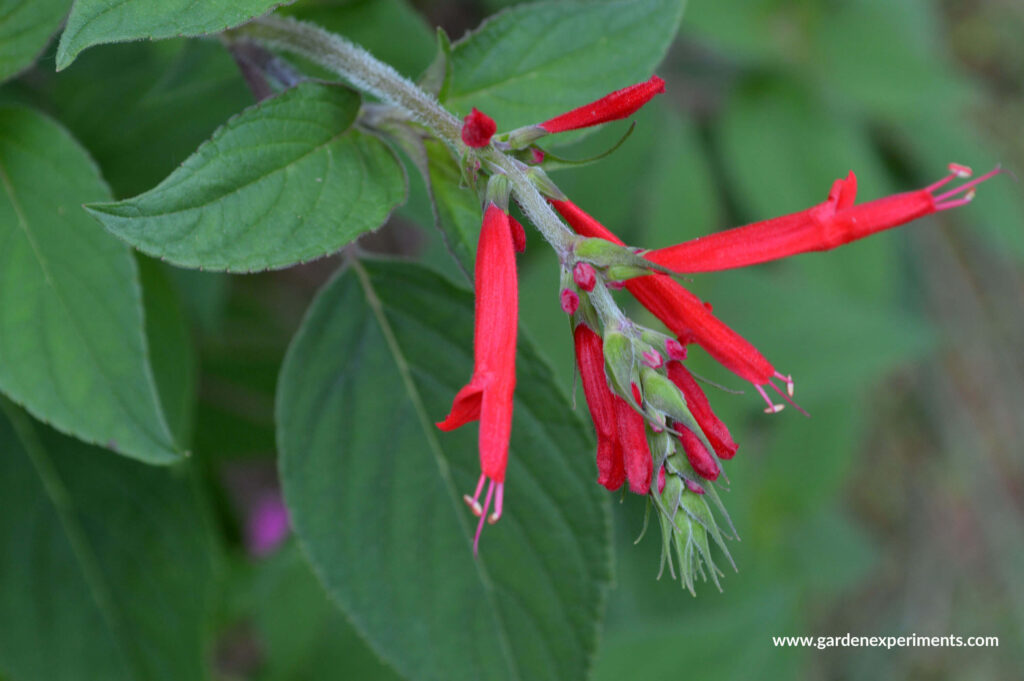I’m in love with all salvias. They grow really well and are so popular with hummingbirds, butterflies, and bees. And did I mention they are beautiful? That’s the perfect combination for my garden. The pineapple sage is no exception.
Attract Butterflies with Pineapple Sage
This past summer, it was a delight to discover that cloudless sulphur butterflies love pineapple sage (Salvia elegans). Every day, a small group of sulphur butterflies bounced back and forth from the pineapple sage to the zinnias.
This plant is named for the pineapple scent the leaves emit when rubbed.
Bloom Time
The small tubular red flowers appear at the end of the tall branches of this plant. The bright-colored flowers are quite appealing. It flowers from summer to fall and is easy to grow.
How to Grow Pineapple Sage
This plant prefers rich, well-drained soil and can grow to be 4 or 5 feet tall and equally as wide. Keep it watered regularly.
Pineapple sage grows best in full sun; however, in hotter climates, part-shade might work best to keep the plant from wilting in the afternoon.
Container Planting
I planted mine in a container. It is underneath a pine tree so it is partially protected from the high heat of summer afternoons and from high winds. As a result, it is coming back up this spring. I can’t wait to see the blooms again.
USDA Plant Hardiness Zones
This salvia is hardy in zones 8 to 11, but in my zone (7b), it came back a second year! It is usually grown as an annual, but in warmer zones, it can be a perennial. Mulch the roots to protect them in the winter.
It is deer-resistant, can tolerate drought conditions, and low maintenance.
Propagation of Pineapple Sage
Propagate this plant by taking cuttings to root in water or soil. You don’t have to use rooting hormone with these cuttings. Everything I’ve read says it is hard to grow from seeds, though I have never tried.
Great Plant Color Combinations
Pair your pineapple sage planting with some of these plants for a great color combination:
- pineapple sage planted with daisies
- pineapple sage paired with black-eyed Susans
- pineapple sage paired with blue mistflower
- pair it with white yarrow, pineapple mint, and lamb’s ear for a red/white combination




